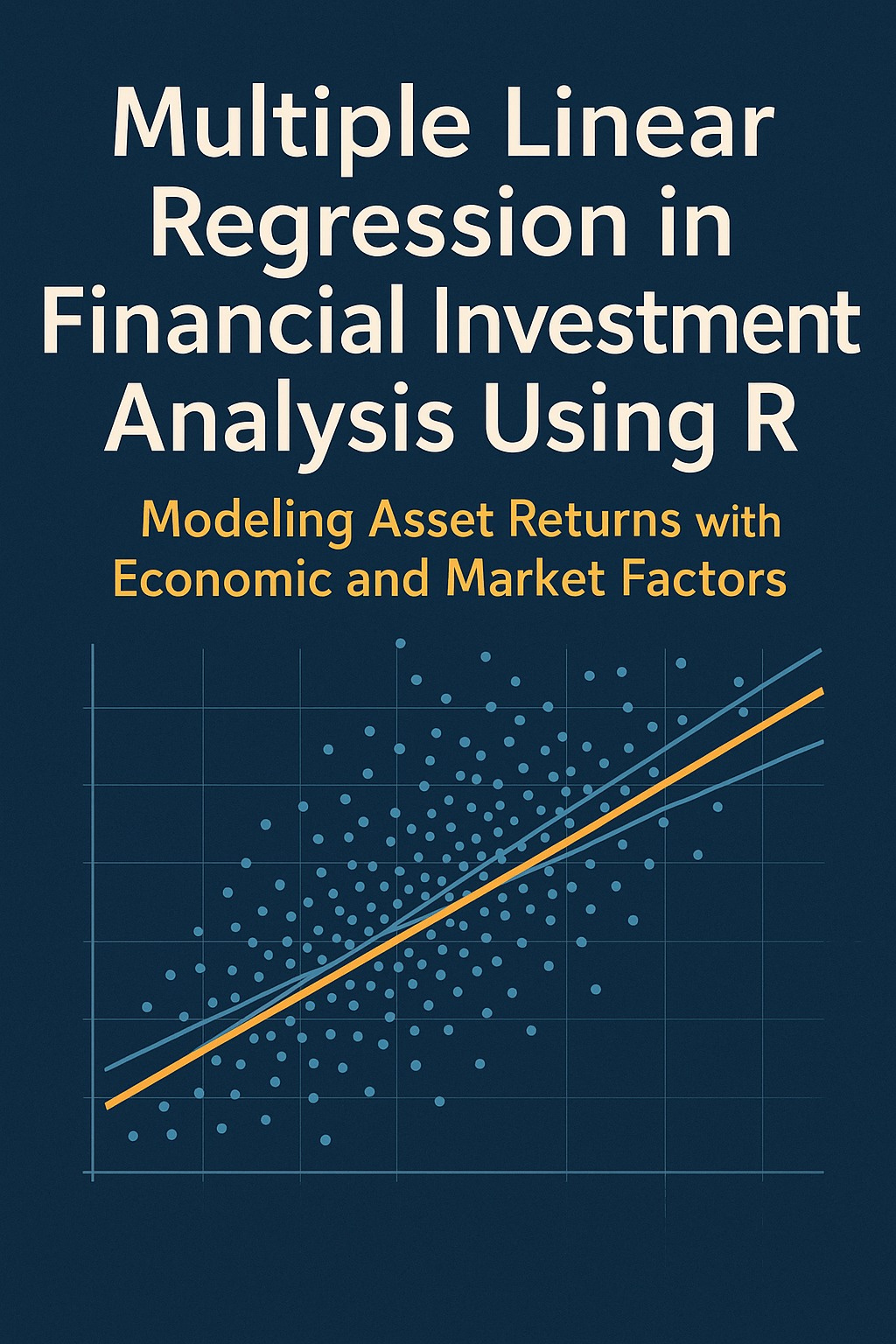Multiple Linear Regression in Financial Investment Analysis Using R: Modeling Asset Returns with Economic and Market Factors
This article demonstrates how multiple linear regression in R enables financial analysts and investors to model asset returns, quantify exposures to economic and market factors, and support robust, data-driven investment decisions.
Article Outline:
Introduction
The critical role of quantitative modeling in modern financial investment analysis
Why multiple linear regression is a core tool for understanding asset returns and risk exposures
The advantages of R for statistical modeling, reproducibility, and visualization in finance
Multiple Linear Regression in Financial Investment
Structure and assumptions of the multiple linear regression model
Interpreting regression coefficients, intercept, and diagnostics in a financial context
Key applications:
Modeling asset returns using economic and market factors
Portfolio risk attribution and performance evaluation
Stress testing and scenario analysis
Comparison to single-factor and alternative models
Preparing Financial Investment Data in R
Structuring asset returns, benchmarks, and economic variables for analysis
Cleaning, transforming, and aligning time series data
Exploratory data analysis and summary statistics
Implementing Multiple Linear Regression in R
Fitting the regression model with
lm()Extracting coefficients, fitted values, residuals, and R-squared
Regression diagnostics: multicollinearity, residuals, and assumptions checking
Visualizing model fit and interpreting output
Interpreting Results for Investment Decisions
Translating coefficients into factor exposures (betas), alpha, and portfolio insights
Using regression output for allocation, sensitivity, and risk analysis
Residual analysis for anomaly detection and model improvement
Scenario Analysis and Forecasting with R
Predicting asset returns under new or hypothetical scenarios using model coefficients
Stress-testing portfolios for shifts in market and economic factors
Integrating regression analysis with portfolio optimization and reporting
Best Practices, Limitations, and Extensions
Ensuring valid model assumptions and data quality
Recognizing limitations of linear regression in finance (autocorrelation, regime shifts, non-normality)
Extending to robust regression, time series models, and machine learning in R
Conclusion
The enduring value of multiple linear regression for quantitative finance
How R empowers analysts with transparent, reproducible, and visual analytics
Next steps for deepening financial modeling and automation
Subscribe to download the full article …
Keep reading with a 7-day free trial
Subscribe to AI, Analytics & Data Science: Towards Analytics Specialist to keep reading this post and get 7 days of free access to the full post archives.




